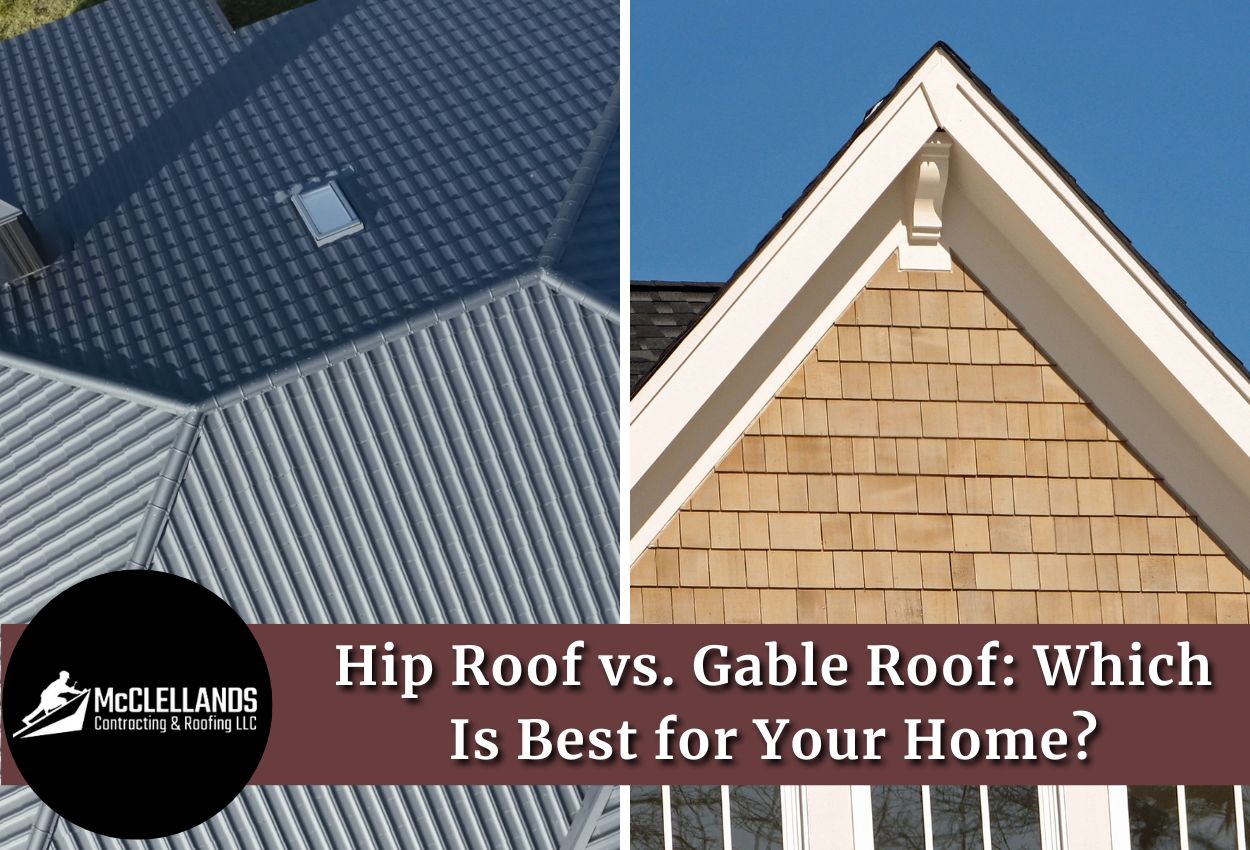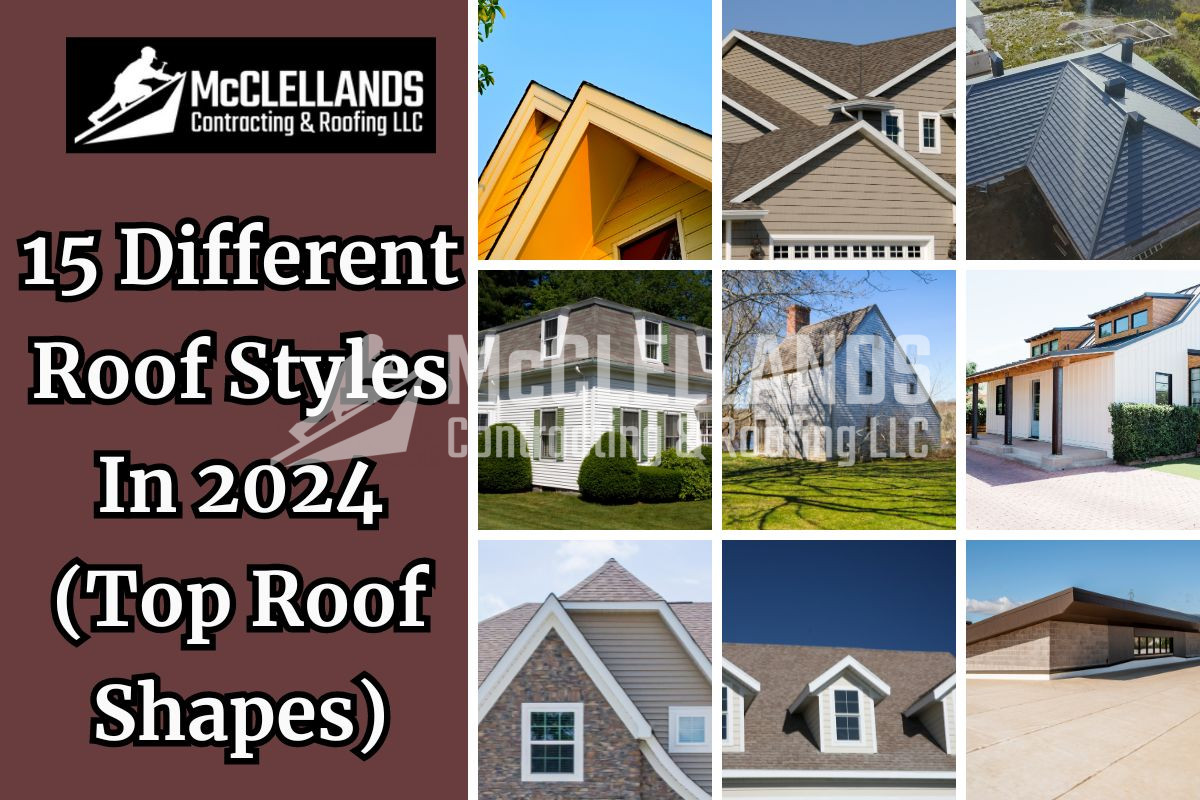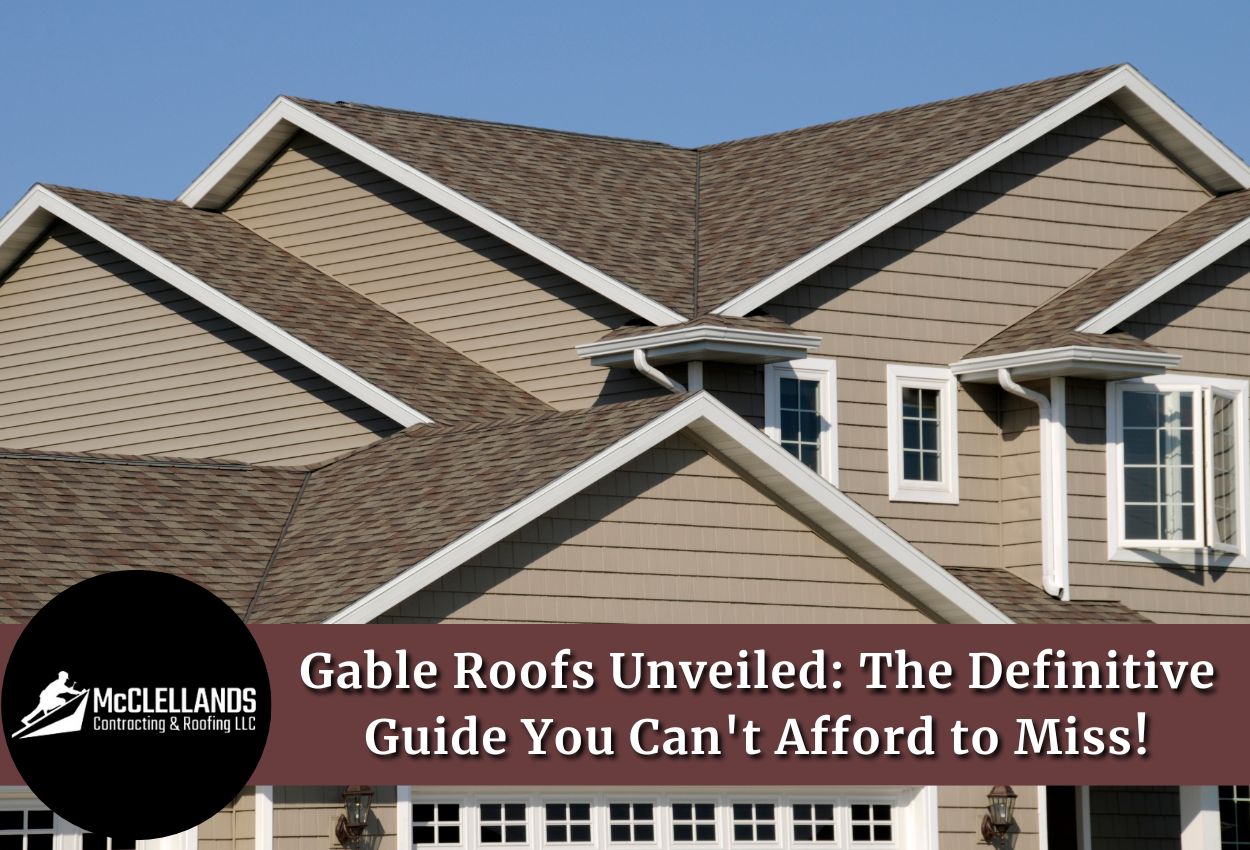When you're buying a new home or considering a roof replacement, understanding the difference between hip roofs and gable roofs is essential.
As experienced Pennsylvania roofing professionals, we often get this question: "Should I choose a hip roof or a gable roof?" Today, we'll help you understand everything about these popular roof styles so you can make the best choice for your home.
What Is A Hip Roof?
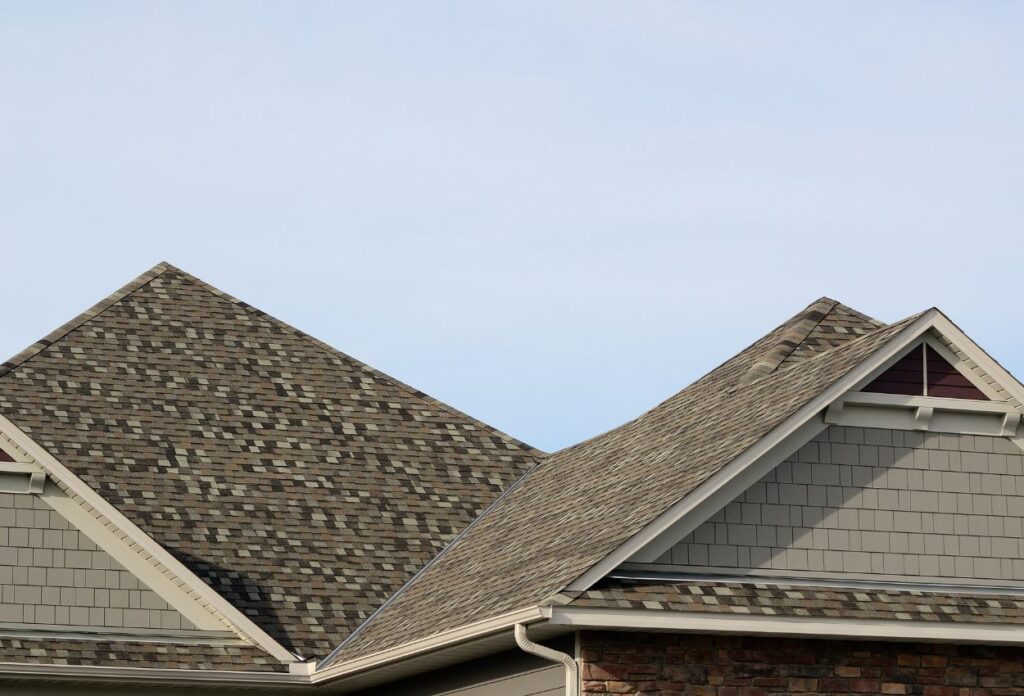
A hip roof features four sloping sides that extend from a central ridge or point down to your home's walls.
When you look at a hip roof design, you'll notice there are no vertical ends. Instead, all sides slope downward at similar angles, creating a balanced, symmetrical appearance.
This distinctive design makes hip roofs particularly appealing for both modern and traditional homes.
What Are The Different Types Of Hip Roofs?
Your options for hip roofs include several variations:
👉 The pyramid hip roof, which rises to a central point - perfect for smaller structures.
👉 The mansard hip roof features two distinct slope angles that can create extra attic space.
👉 The hip and valley roof combines multiple hip sections for larger homes.
👉 The combination hip roof creates interesting architectural details with varying slopes.
What Is A Gable Roof?
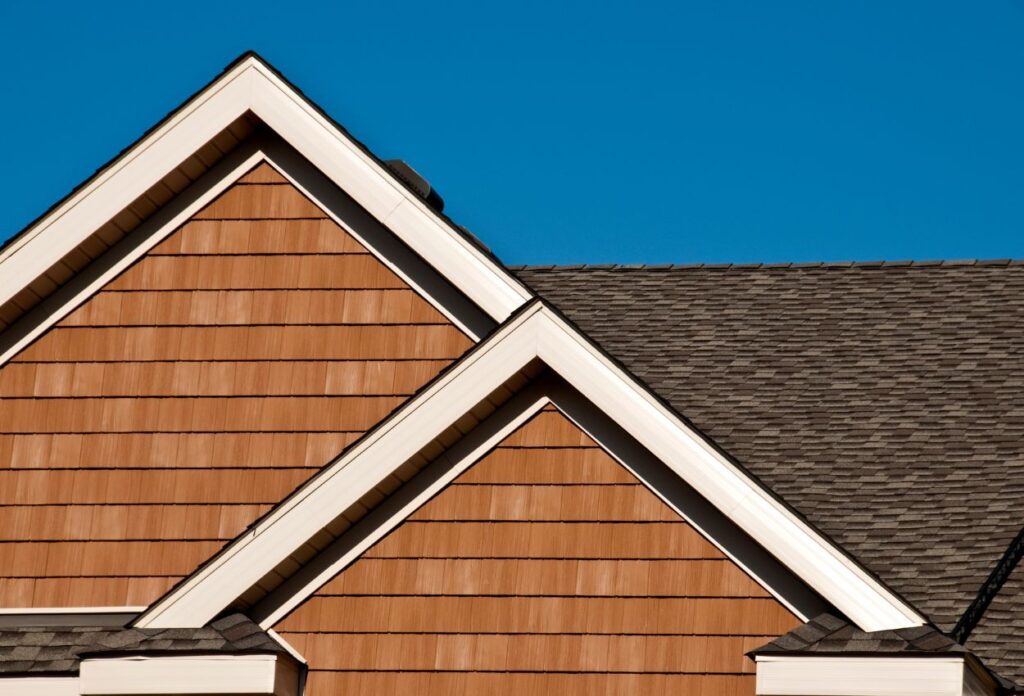
A gable roof is likely what you picture when thinking of a traditional roof. This design features two sloping sides that meet at a ridge, creating triangular walls (gables) at each end.
Gable roofs have long been a staple in Pennsylvania architecture, and there's a good reason for their enduring popularity: they're both practical and versatile.
What Are The Different Types Of Gable Roofs?
Here are some common types of gable roofs that you can choose from:
👉 Open gable roofs that provide the classic triangular look.
👉 Box gable roofs that can add architectural interest with extended overhangs.
👉 Cross gable roofs, which combine two gable sections for added aesthetics.
👉 Gambrel roofs (think barn-style) that offer extra space with their unique shape.
👉 Saltbox gables, which provide asymmetrical charm with colonial character.
Hip Roof vs. Gable Roof: A Detailed Comparision
When comparing gable roofs vs. hip roofs, several key factors will influence your decision. Let's explore each aspect to help you make an informed choice for your Pennsylvania home.
#1 Aesthetics and Appearance
Your roof directly impacts your home's overall appearance.
Hip roofs offer a sophisticated, symmetrical look that works beautifully with both modern and traditional architecture. Their balanced design creates clean lines that many homeowners find appealing.
Gable roofs provide a classic aesthetic that is particularly suited to colonial and traditional home styles. Their simple, striking lines often allow for decorative elements like gable vents or ornamental trim, giving you more options for personalizing your home's appearance.
#2 Weather Performance
Your roof needs to handle everything from our humid summers to snowy winters.
Hip roofs excel in high-wind conditions thanks to their aerodynamic shape and self-bracing design. They're less likely to experience uplift during strong winds, which is why many insurance companies offer discounts for homes with hip roofs.
In areas with heavy snow, gable roofs often perform better. Their steeper pitch allows snow to slide off more easily, preventing dangerous weight accumulation. This natural snow-shedding ability makes gable roofs particularly popular in Pennsylvania's snowier regions.
#3 Cost Considerations
Your budget plays an important role in choosing between a hip roof and a gable roof.
Gables roofs can cost you anywhere between $6 and $9 per square foot. They generally need fewer materials, take less time to build, and require less complicated flashing and waterproofing than hip roofs.
On the other hand, hip roofs generally range between $8 to $13 per square foot. The main reasons being they need more materials, involve more complex construction techniques, take more time to build, and require skilled craftsmanship for proper installation.
#4 Space and Ventilation
If you're planning to use your attic space, this could be a deciding factor.
Gabled roofs generally provide more usable attic space because of their steep pitch and straight walls. They also offer excellent ventilation options through gable vents, which can help regulate your home's temperature and moisture levels.
Hip roofs provide less attic space due to their sloping sides, but you can add dormers to create additional headroom and natural light. While the space might be more limited, many homeowners appreciate the cozy atmosphere a hip roof creates in upper-level rooms.
#5 Insurance and Long-Term Value Considerations
Your choice of roof design can affect both insurance costs and home value.
Hip roofs often qualify for insurance discounts in many areas due to their superior wind resistance. Some insurance companies offer premium reductions of up to 10% for homes with hip roofs in wind-prone regions.
Gable roofs, while potentially not qualifying for specific insurance discounts, can add value through their additional usable space and lower maintenance costs.
Both designs can positively impact your home's resale value when properly maintained and suited to your local climate.
#6 Durability and Maintenance Requirements
Both roof types can offer excellent durability when properly installed.
Hip roofs generally require less maintenance over time due to their inherent stability and resistance to wind damage. Their design also provides consistent drainage on all sides, reducing the risk of water damage.
Gable roofs, while generally durable, may need more attention to maintenance, particularly around the gable ends and vents. However, their simpler design often makes repairs more straightforward and potentially less costly when needed.
Important Things To Consider Before Making A Final Decision
Choosing between a hip roof and a gable roof ultimately depends on your specific needs. As your trusted Pennsylvania roofing experts, we recommend considering the following:
👉 Your local climate and typical weather patterns.
👉 Your budget for both installation and long-term maintenance.
👉 Your plans for attic space usage.
👉 Your home's architectural style.
👉 Your neighborhood's predominant roof styles.
👉 Your local building codes and requirements.
Whether you choose a hip roof or a gable roof, proper installation is crucial for long-term performance. Working with experienced roofing professionals ensures your new roof will protect your home and family for decades to come.
Need help deciding which roof design is best for your Pennsylvania home? Contact our experienced team today. We'll help you evaluate your options and choose the perfect roof design for your needs, whether a classic gable roof or a modern hip roof.
Get A Custom Roof Quote For Your Home In Pennsylvania
If you are looking for a durable and professional roof installation in Pittsburgh and the surrounding areas of Pennsylvania, we are here to assist you. At McClellands Contracting and Roof, LLC, we are among the most reputed roofers in Pennsylvania, and our quality workmanship is what makes us a trusted choice.
With over two decades of experience in both hip roof and gable roof installations, our certified team understands Pennsylvania's unique weather challenges and building requirements.
Whether you're building a new home or planning a roof replacement, we ensure every project meets the highest standards of quality and customer satisfaction.
To know more or to get a custom quote, call us at (412) 353-5660.
Frequently Asked Questions
A. While it's technically possible to convert one roof style to another, it's a major undertaking that requires significant structural changes and additional costs. In most cases, it's more practical and cost-effective to build a new roof with the desired style during a construction or major renovation project.

